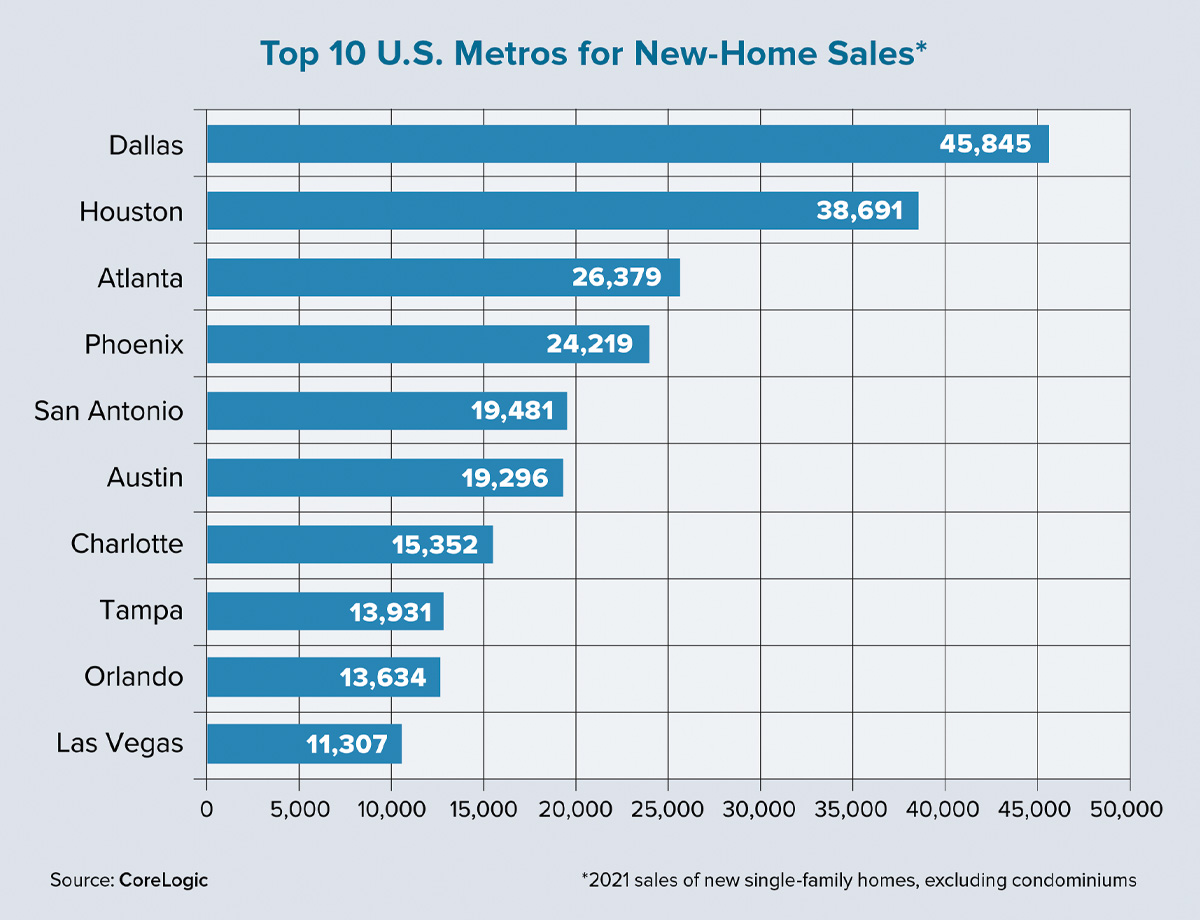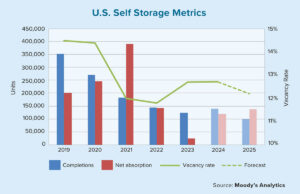The COVID-19 pandemic has contributed to unprecedented migration throughout the U.S. and an increasing need for new homes in places with fast population growth. Over the past two years, families have moved from high-cost communities with a dense housing stock to places with a lower cost of living and more space between homes.
The U.S. Census Bureau estimated that from April 2020 through June 2021,
the states of New York, California and Illinois lost a combined total of more than 800,000 residents. Texas, Florida, Arizona and North Carolina, meanwhile, gained an aggregate of more than 860,000 new residents. Georgia also gained nearly 88,000 people to round out the list of the top five states by net population gain during this time. Such a large relocation of people during such a short time span has rarely, if ever, been seen in the U.S.
These swings in population are reflected in the latest construction data for single- family homes. CoreLogic analysis of new single-family home sales in 2021 shows that nine of the 10 metropolitan areas with the largest numbers of new-home closings were in the five states with the largest population gains. Four of these metros were in Texas, the state with the largest net population gain during the first 15 months of the pandemic.
The Dallas, Houston, San Antonio and Austin metro areas combined for nearly 125,000 new single-family home closings during the year, or about one in six such transactions nationwide. Florida was the other state with multiple entries in the top 10 list. Tampa and Orlando, the state’s largest metros after Miami, each added more than 13,000 new single-family homes.
Metros with the largest numbers of new-home sales tell only part of the story of the increased need for housing as populations have shifted. Places with a smaller population size also recorded large percentage increases in new-home construction during 2021, even though these increases may not have been large enough to make the top 10 list by sheer numbers of sales. Common attributes that these markets share are a lower cost of living, lower population density and nearby outdoors amenities.
The data shows that four of the top 10 metros with the highest percentage growth in new-home closings last year were in Florida: Port St. Lucie, Lakeland, Deltona and Cape Coral. These four metros experienced a combined 28% increase in new-home closings from 2020 to 2021. Rounding out the top 10 list by percentage growth were Reno, Nevada; Stockton, California; Greeley, Colorado; Las Vegas; San Antonio; and Tulsa, Oklahoma.
Even when buying a new home in a market with a lower cost of living, the average sales prices for these properties are typically higher than for existing homes and often require financing. The buyer’s choice of mortgage product to finance a purchase varies by sales price.
For new homes that sold for less than $250,000 last year, about half were financed with a government-backed loan through the Federal Housing Administration or the U.S. Department of Veterans Affairs, while the rest were financed with a conventional loan. At the opposite end of the price spectrum, for new homes that sold for $1 million or more, nearly all the mortgages were conventional, and most of them were jumbo products that exceeded the loan limits of Fannie Mae and Freddie Mac.
Expect new-home sales to further increase in 2022. Once again, the growth will be centered in places with the highest population gains, which are projected to be Texas, Florida and Arizona. ●
-
Frank E. Nothaft is chief economist for CoreLogic, America’s largest provider of advanced property and ownership information, analytics and data-enabled services. He leads the economics team responsible for analysis, commentary and forecasting trends in global real estate, insurance and mortgage markets. Before joining CoreLogic, Nothaft served as chief economist for Freddie Mac. Prior to Freddie Mac, he was an economist with the Board of Governors of the Federal Reserve System.
View all posts






